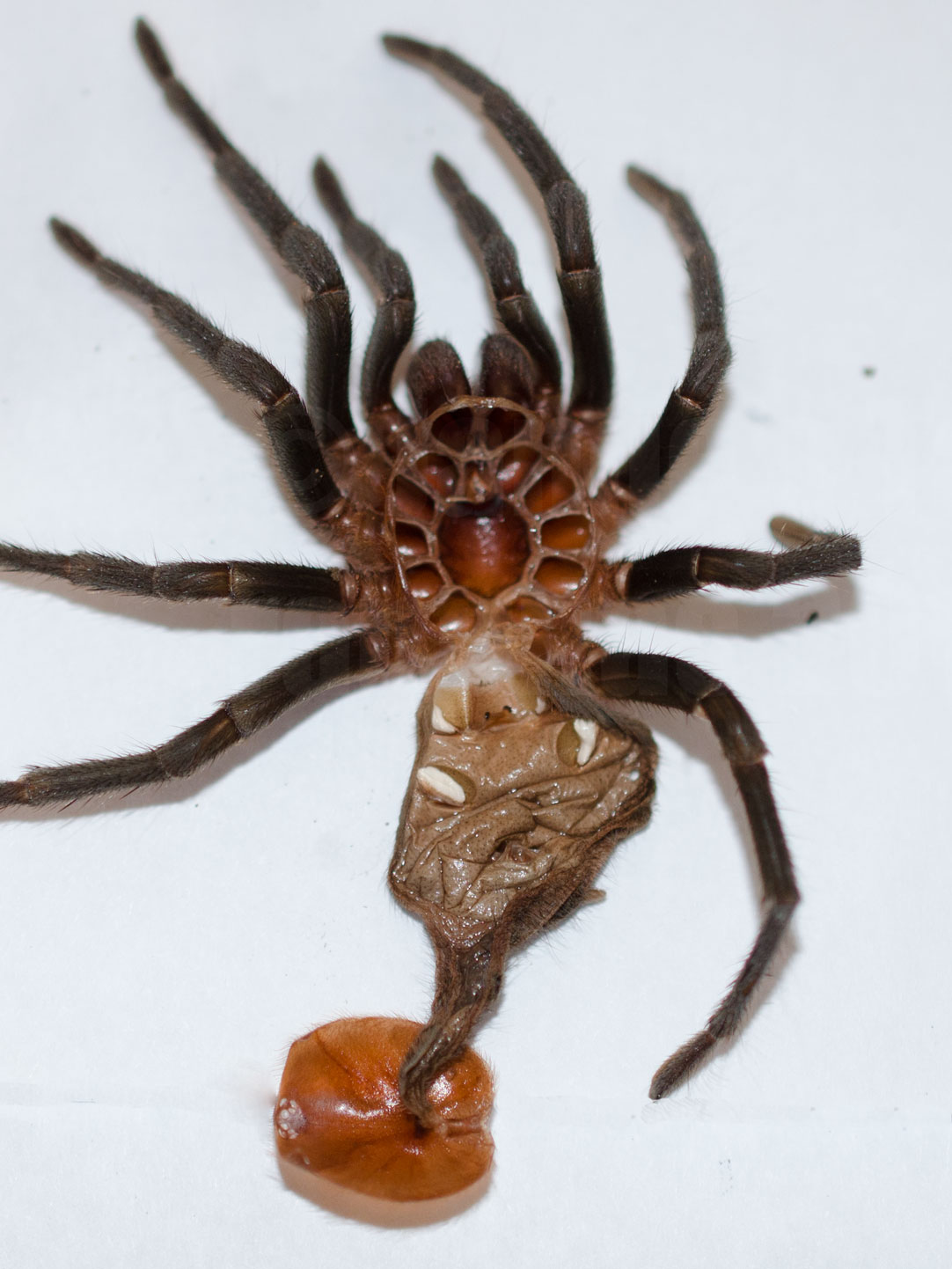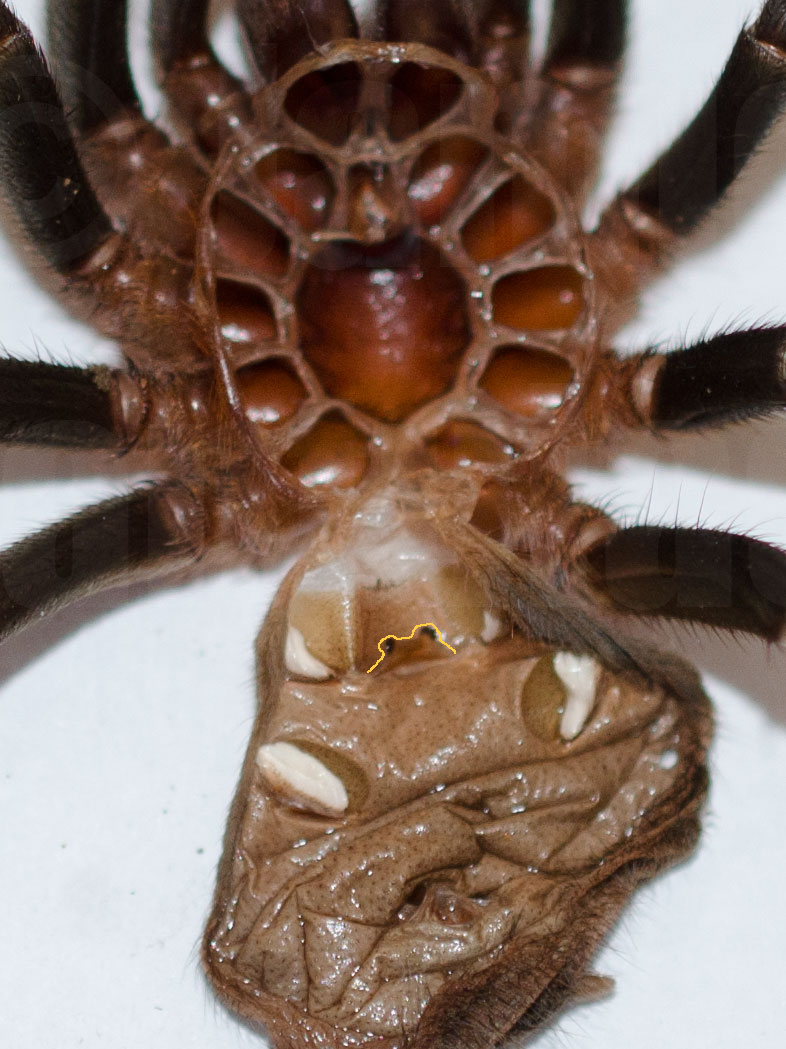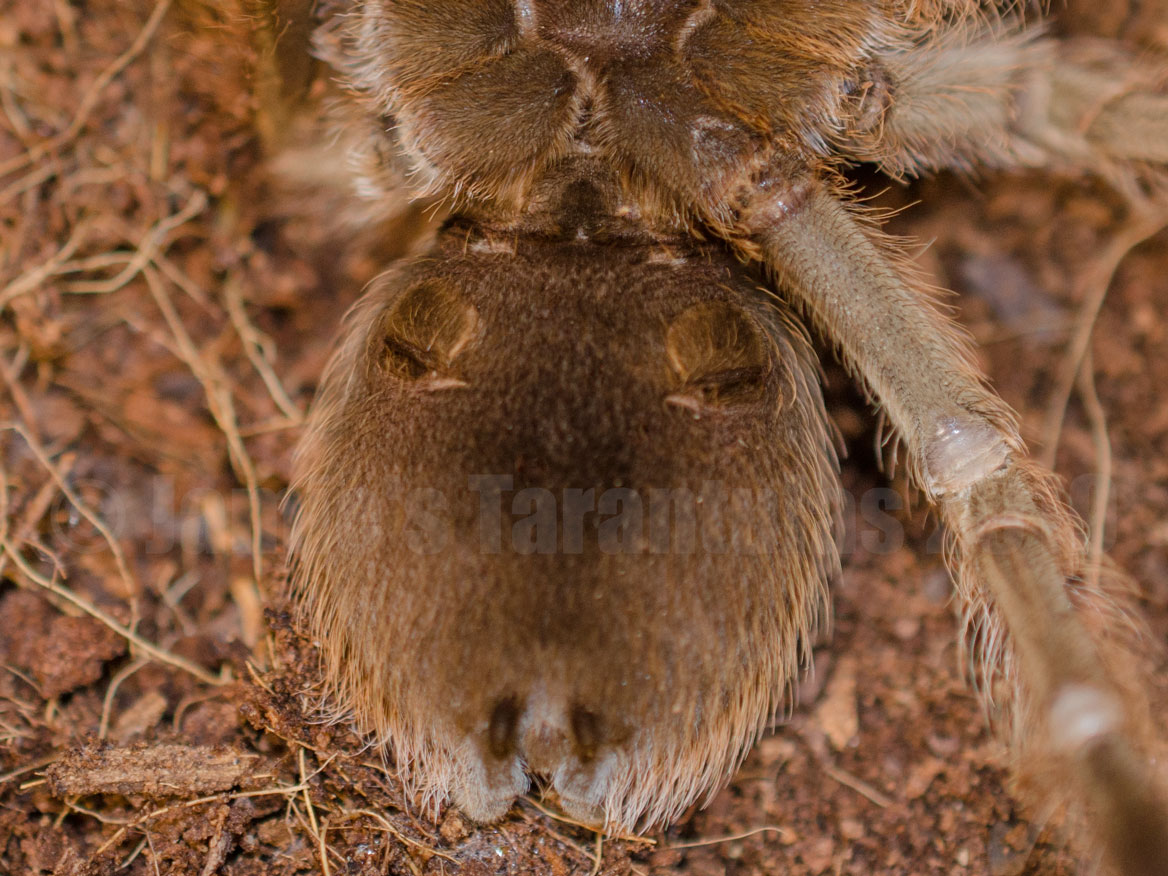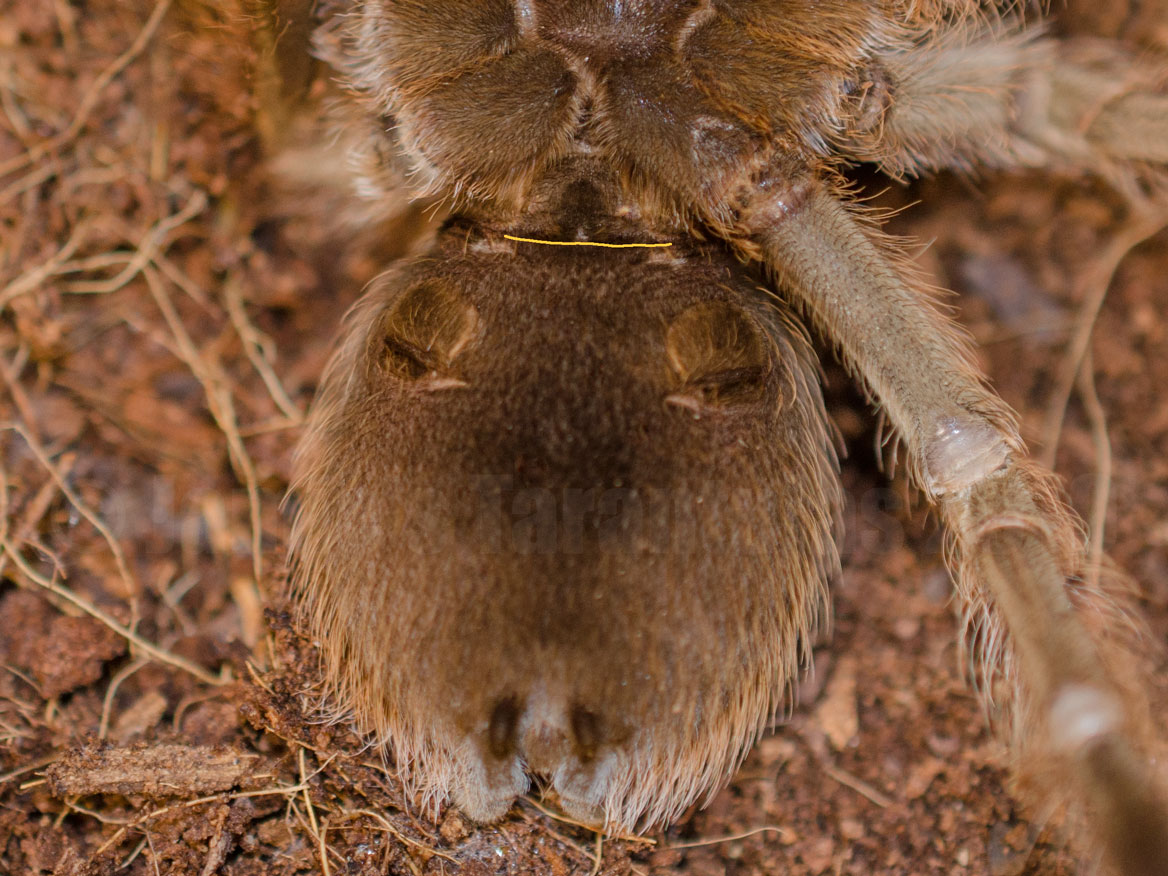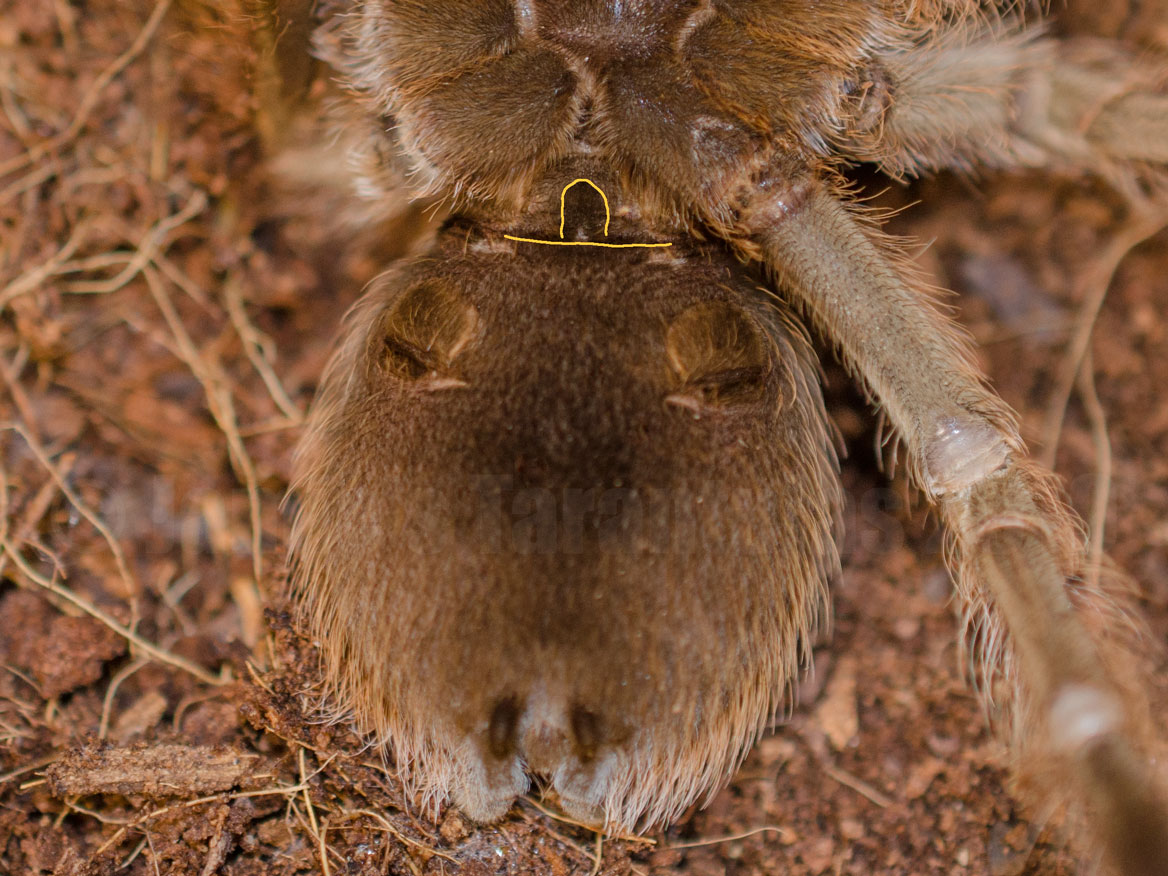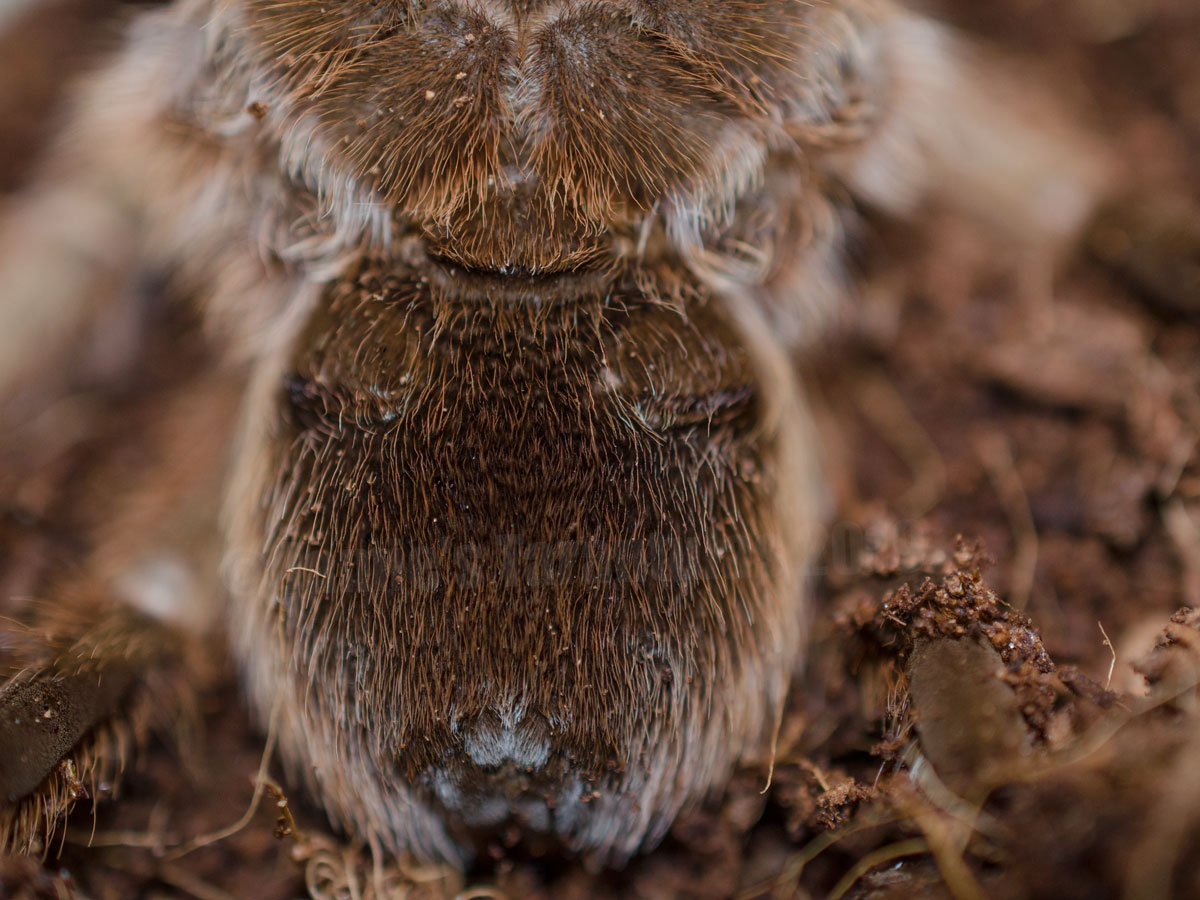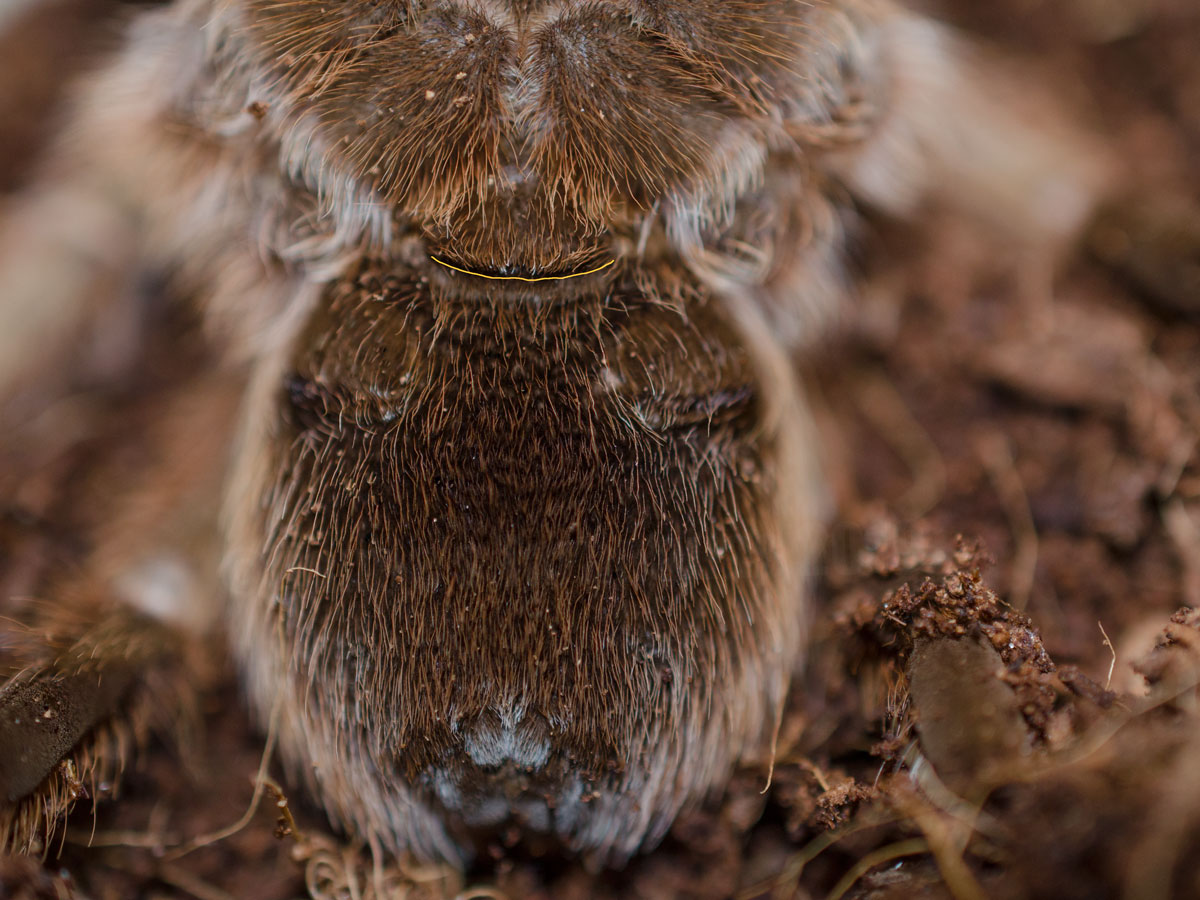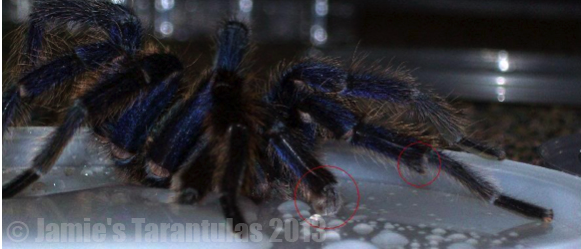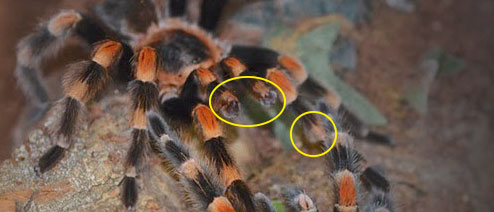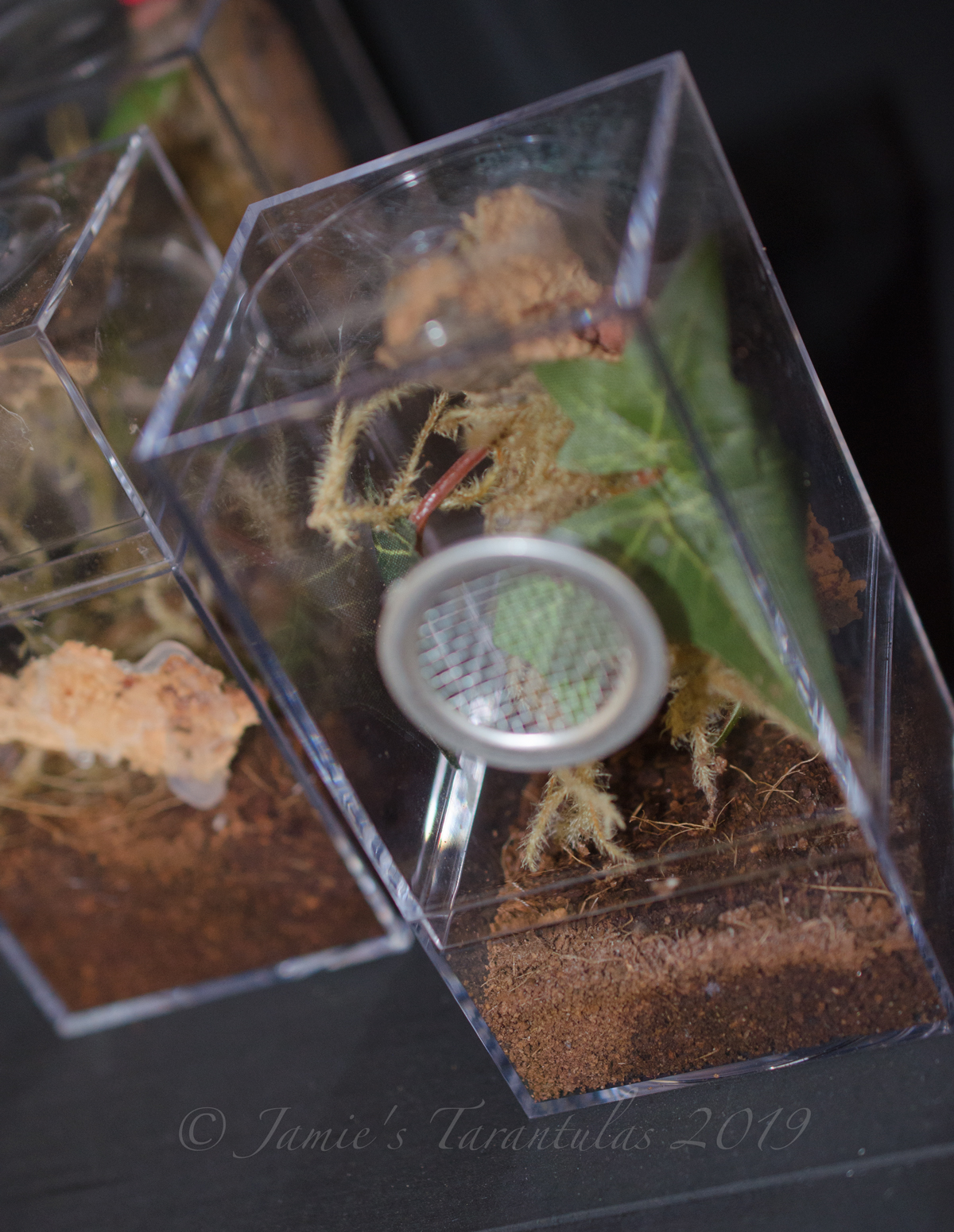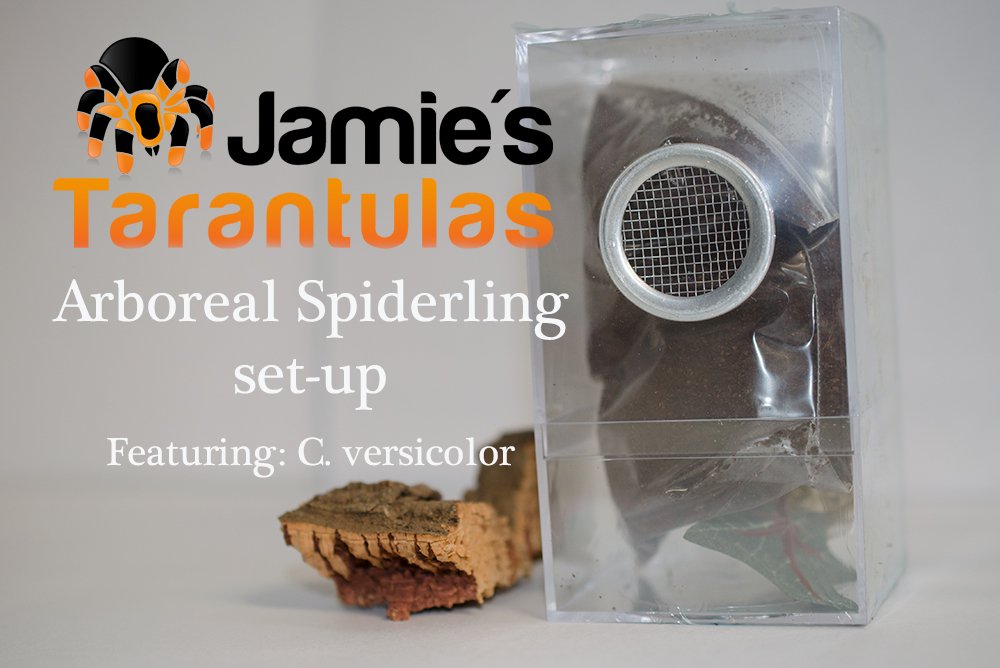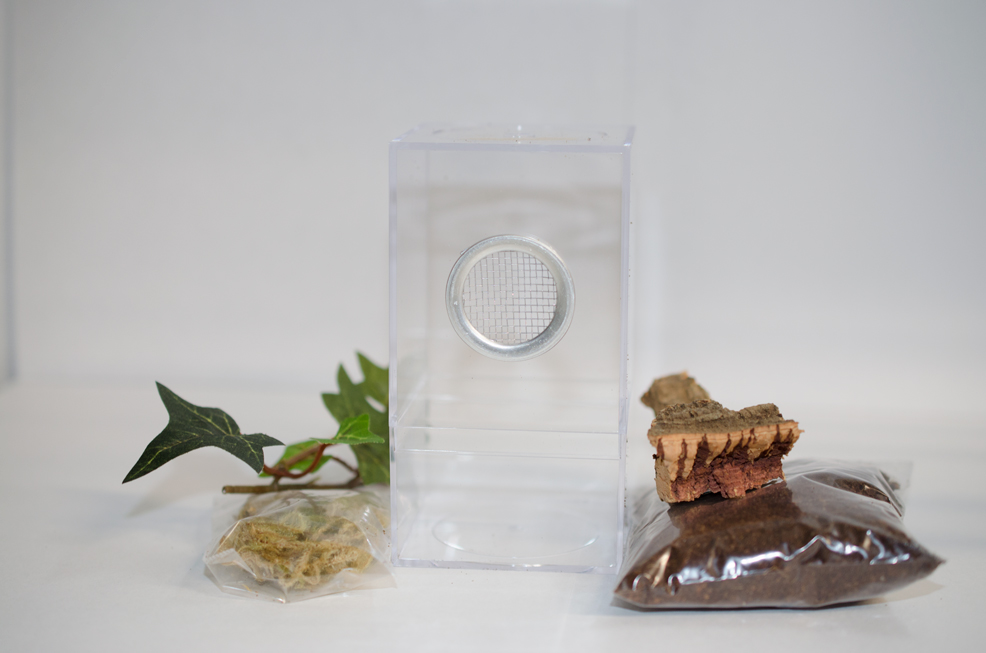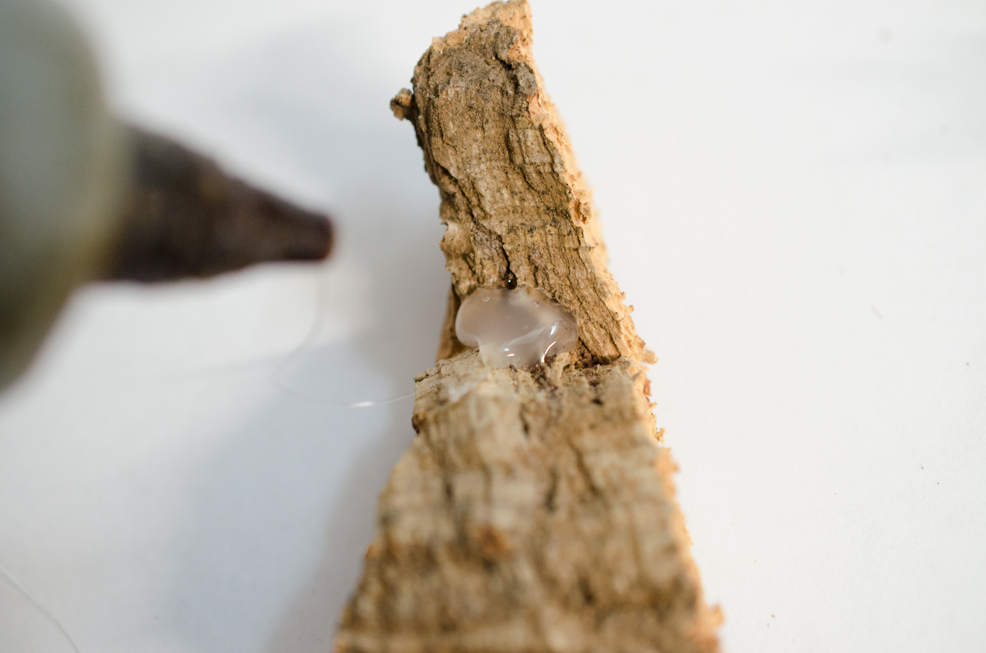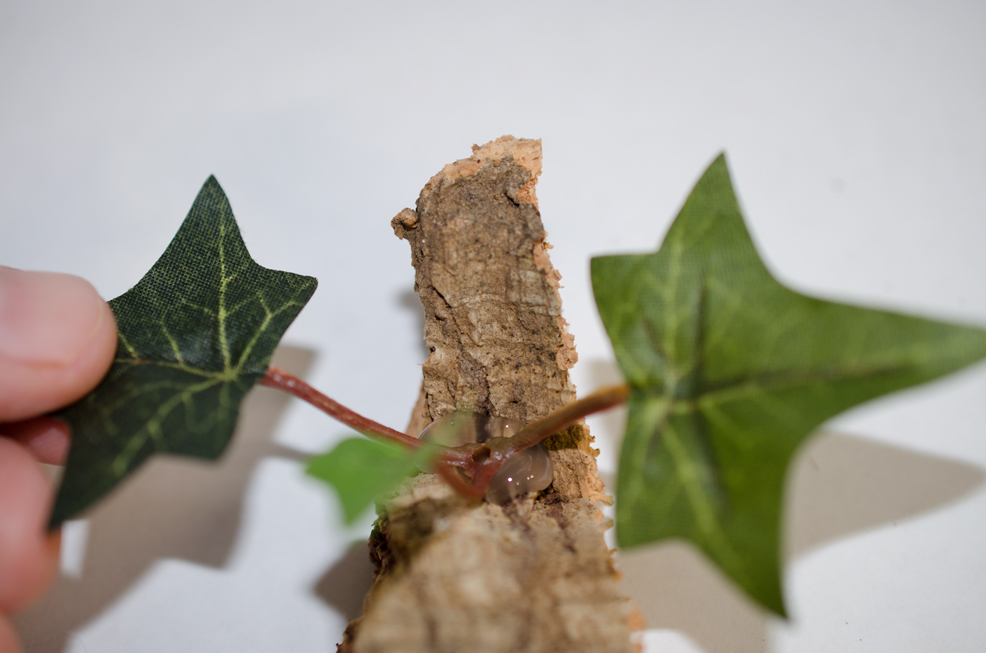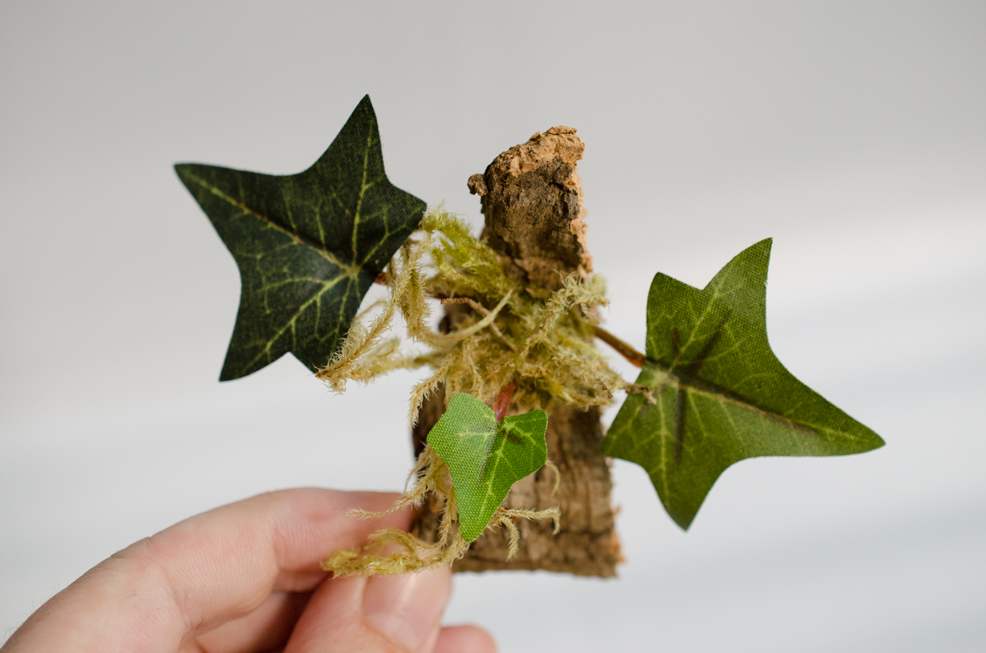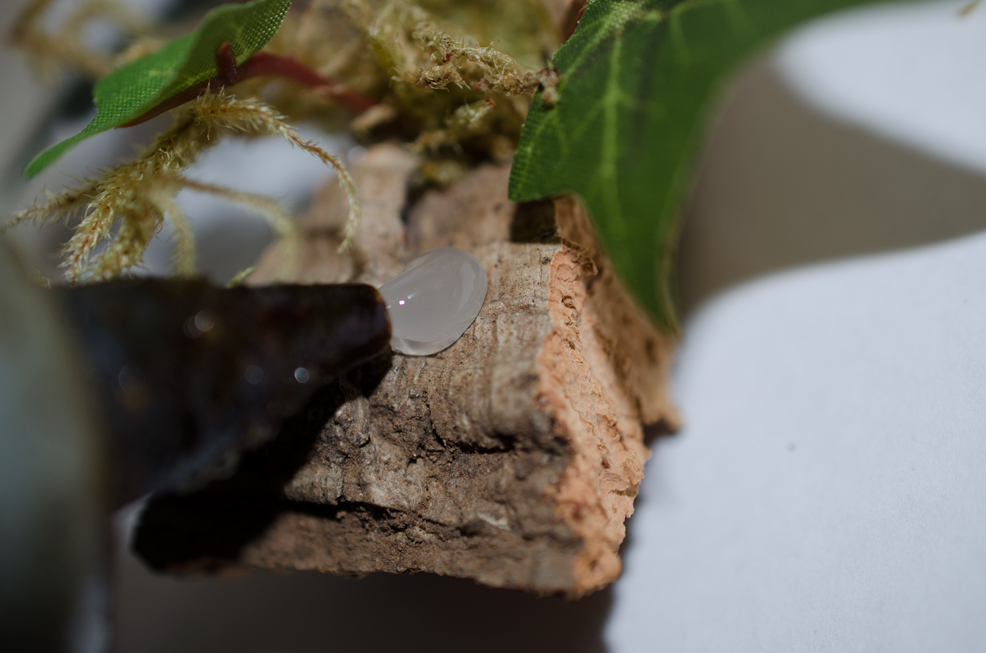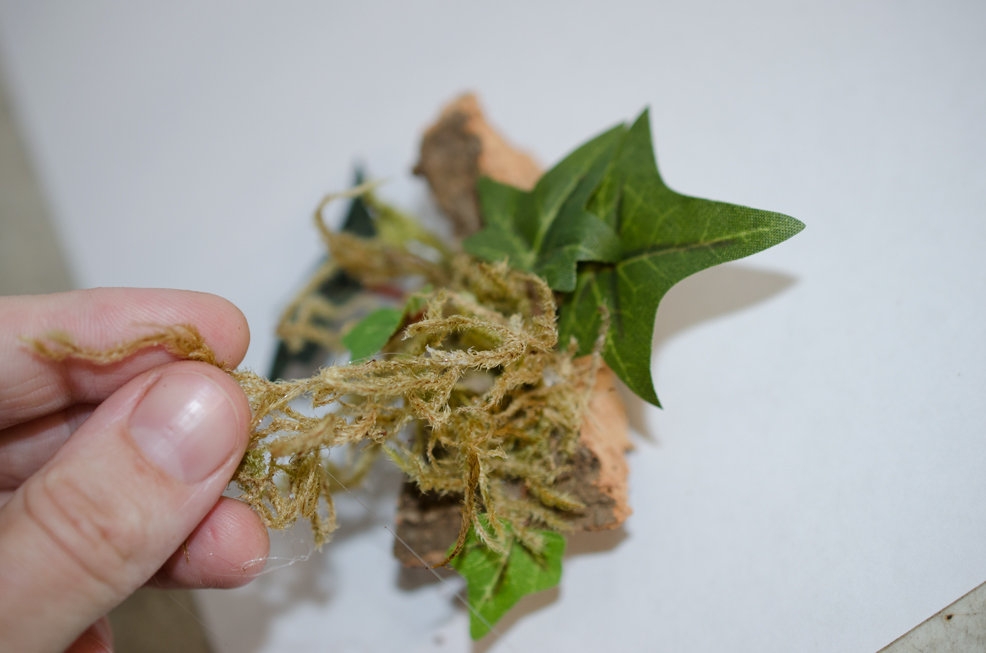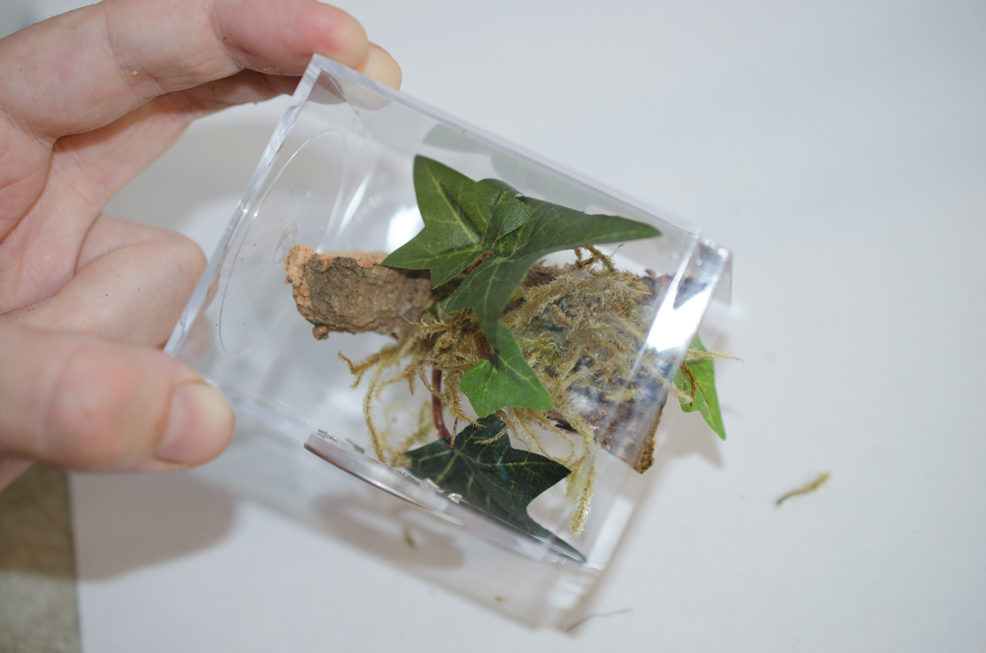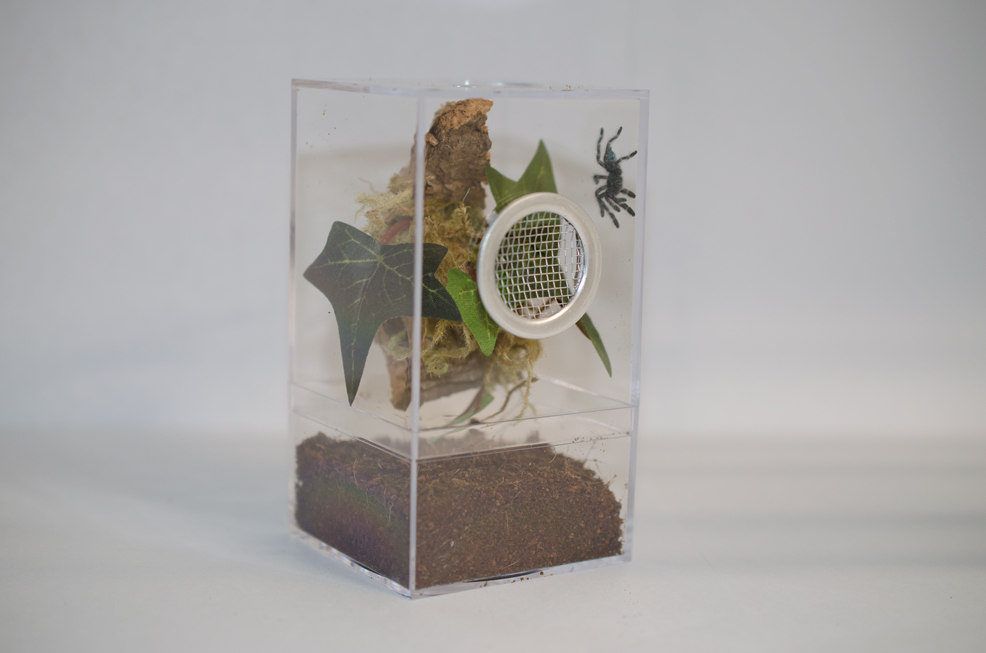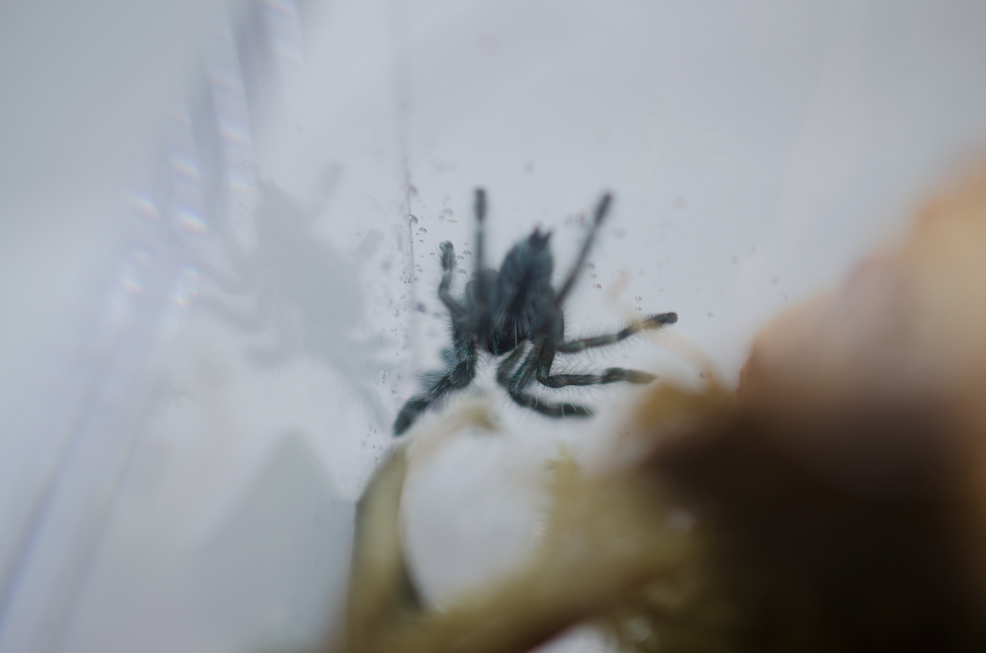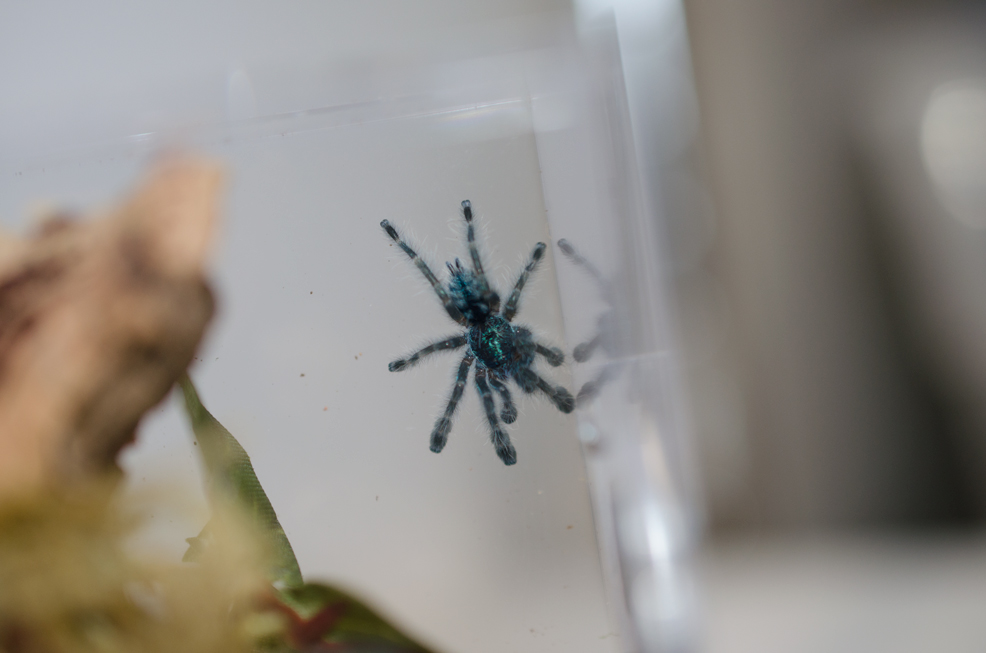To properly measure a tarantulas true, outstretched diagonal leg-span or “DLS” there can be no noticeable bends in it’s knees. If there are any bends this can throw off the measurement often by a an extreme margin. A scrunched up leggy specimen can measure as little as half it’s actual DLS size!
I personally measure everything we sell and here is roughly how I do it. Keep in mind this is usually done with the tarantula still in it’s enclosure for both the safety of me and the tarantula I am trying to measure.

I had this particular specimen out for a photo shoot she was pretty content in this pose. I figured it would be a good opportunity to take this picture with the caliper. Although the knees are slightly bent in this photo (so this one will measure a little smaller) we can see the caliper reads approximately 2.6 inches diagonal leg-span/DLS.
The absolute best device I have found to measure DLS is a caliper. An analog caliper like the ones pictured have been an indispensable tool in my collection. Just about every tarantula on the website is measured with a caliper.
This 3″ Brass caliper (pictured below) is the one we sell on the website. Here you can see this B. emilia measures about 2 3/4″ DLS. 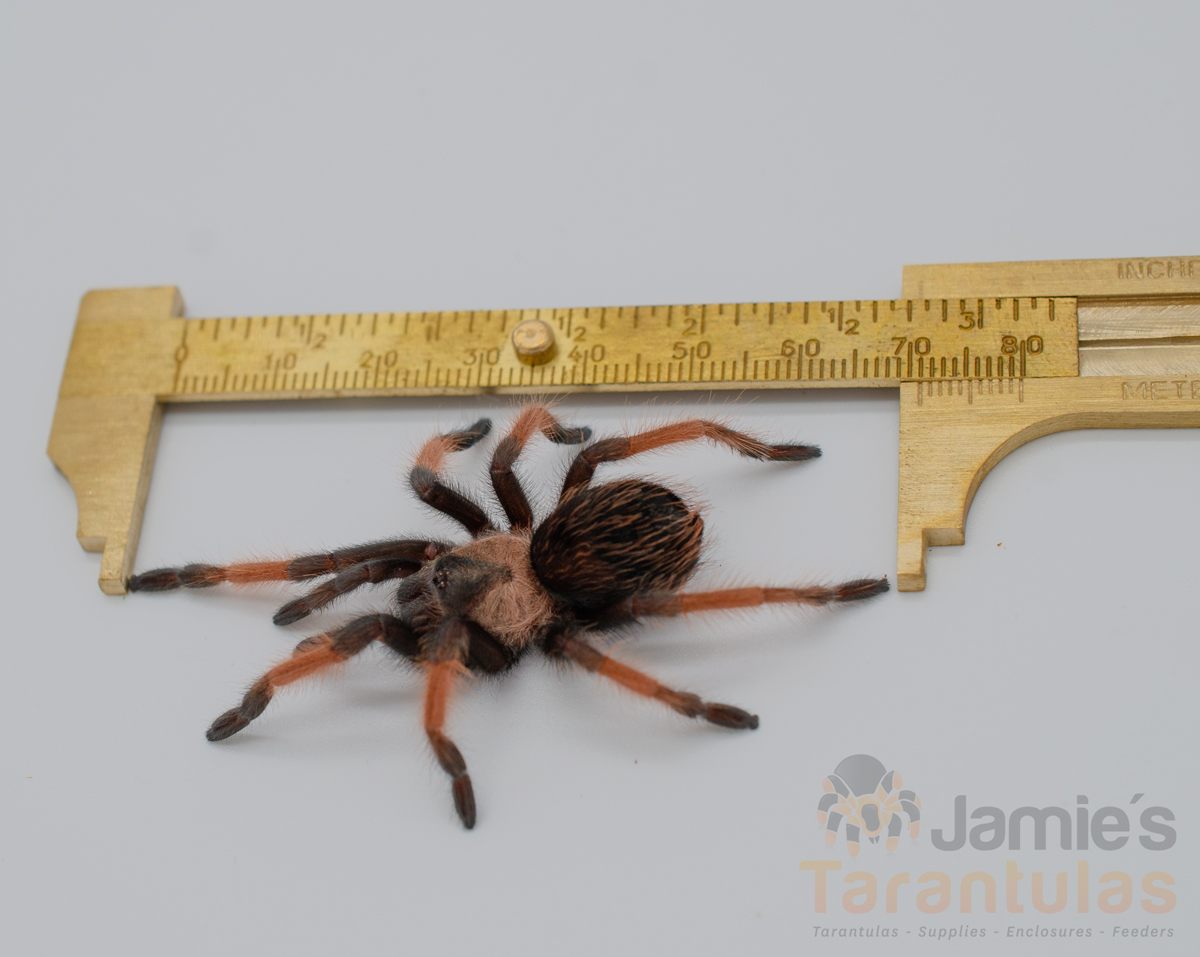
Here is that same female in a different position, this time with the knees bent and the legs tucked close against the body. Check out how this 2 3/4″ female can scrunch up and throw off that measurement so she looks closer to 1 1/2″! Remember, NO BENDS in the knees!
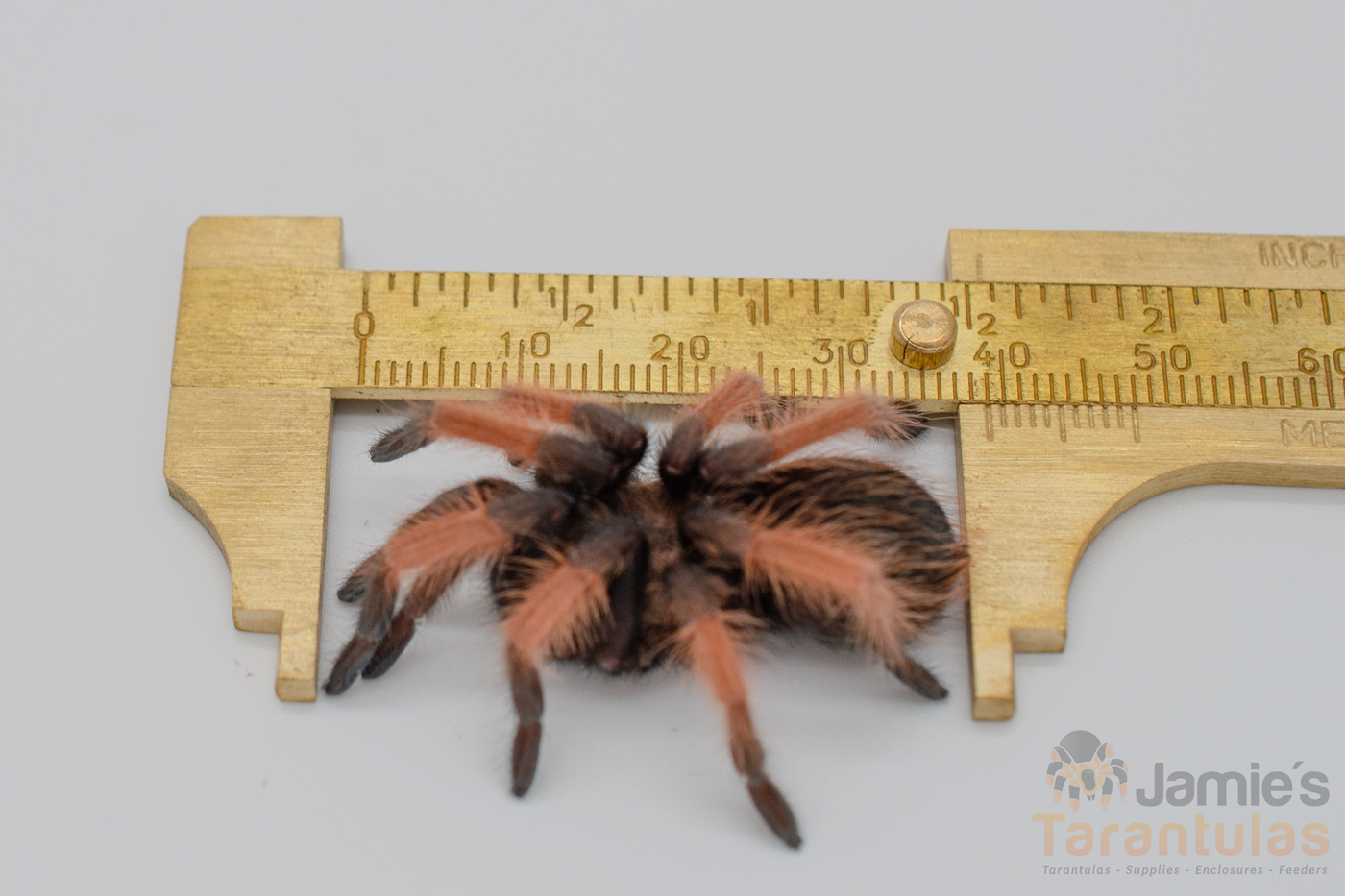
Here is another photo I took to help potential customers visualize small spiderlings. I have set the caliper to 1/2″ inch and marked the diagonal leg span on this little dude (seen in red and black) either side would do for an accurate measurement. I couldn’t get the caliper any closer to this little one without touching it, but even so, with bent knees we can clearly see this little spiderling is well over that 1/2″ mark.
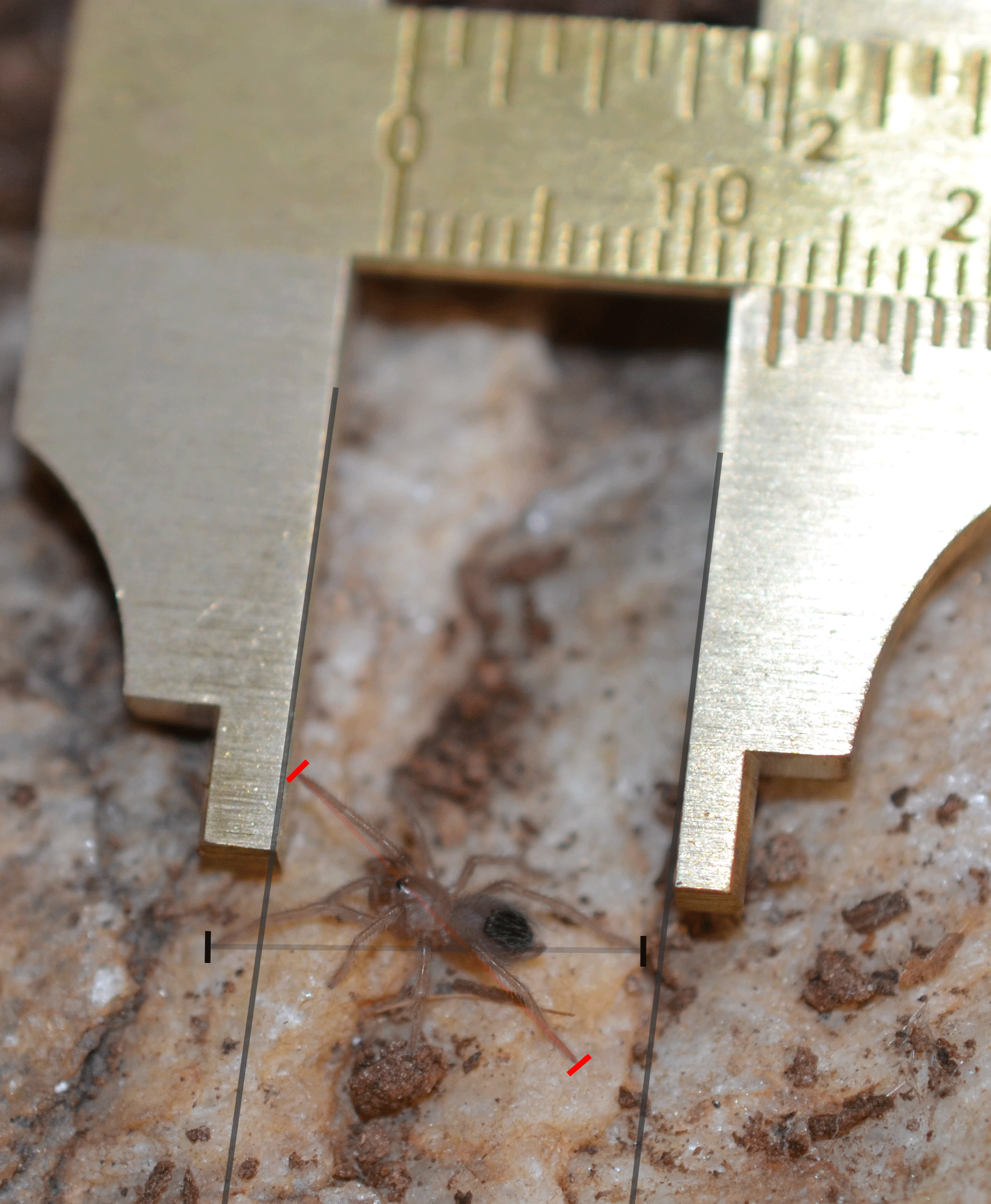
Here is that same L. parahybana spiderling on my hand for more size reference, I wear a size small glove. It is remarkable how this little third instar 1/2″+ LP can grow to 8.5″ or more!

Here is how I measure tarantulas in the real world. It’s MUCH safer and easier when the tarantula is measured inside it’s enclosure like so:
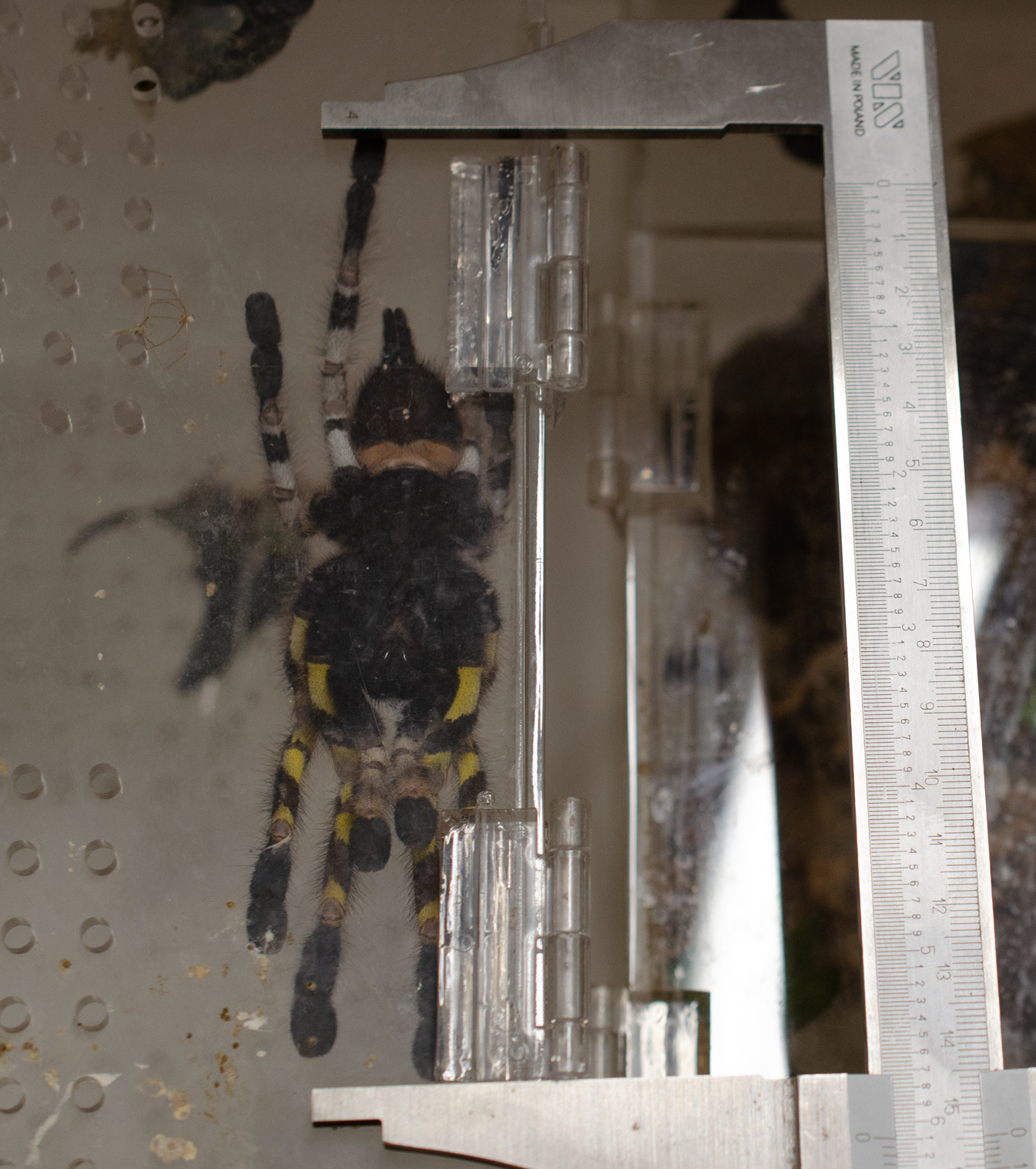
Granted she is not outstretched (again there are bends in her knees) however, we can clearly see she is over 6″ with this measurement.
Don’t be discouraged, it is difficult even for me to get all the bends out of the knees so I usually measure them a little under their actual, fully outstretched size. This gives me a little wiggle room for their ad and I can never recall a customer complaining about getting a slightly larger specimen!



